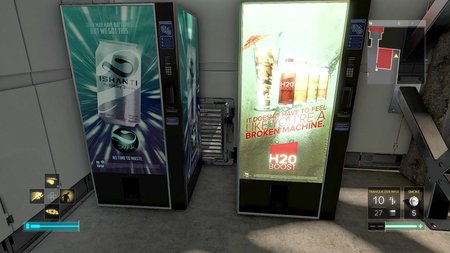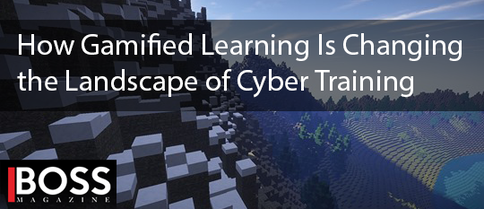|
|
Personal Projects
|
|
|
Recently I played Dishonored 2, and I was really impressed with the overall level design and structure. Then I got to thinking… the design intent of these levels were very similar to Deus Ex: Mankind Divided. Both games provide the user with multiple points of egress, objects to interact with that changes the way that players accomplish their goals, multiple hidden paths, etc. Both games also offer the player abilities, one being supernatural and the other high tech. While there are many similarities that can be drawn, what then makes these games different?? Why were the levels more rewarding in Dishonored versus Deus Ex? I’ll be exploring this, and more in today’s post! There might be some pretty considerable level spoilers for both games, if that is a concern turn back! When starting this analysis, I had many ideas on how these games might be different from one another. One of my initial thoughts about how Deus ex may differ from Dishonored, was perhaps the frequency of alternative routes within the environment. I had some pretty lofty ambitions to map out the flows of movement through similar spaces, and pretty quickly found just how difficult that might be. Namely due to Dishonored’s ability to blink to inaccessible areas, drastically changes the movement around the playspace. Also once I started to compare the layouts between these two games, generally speaking nothing really jumped out as out of the ordinary. In the end I think it comes down to three general elements that I’ll be exploring : Movement, Visual Affordance, and Repetition of visual/movement cues. To begin it’s worth introducing similar abilities between these two games. While there are many abilities, I’ll be focusing on the ones that are common between the two… more or less. Both of these games enable supernatural movement around the environment. Deus Ex provides the player with the ability to jump extremely high, and dash laterally across the environment. In a similar sense Dishonored players have the ability to teleport/blink great distances, allowing the players to access areas and nooks previously inaccessible. Both games also give the players a supernatural vision, that allows them to see through walls. While they act in slightly different ways, both give the players more insight into their surroundings. These two have the most impact in regards to movement around the level. Movement
Dishonored on the other hand, leverages it’s teleport ability in ways that feel entirely unpredictable. Launching my character to unrealistic areas like on top of chandeliers, light posts, or any small alcove that would support me… provided a very organic feeling to the environment. While I’m sure the placement of objects were very intentional at times, it never felt as purposeful as Deus Ex. Perhaps this makes it an unfair comparison, as Deus Ex’s level design would have to have been limited to the abilities allocated to the player. Without such freedom of movement, would Dishonored feel more similar to Deus Ex? It’s possible but I believe there are other elements at play here. Visual AffordanceI’ve discussed Visual Affordance a lot in previous blog posts, in this case I want to discuss how lighting, contrast, and other visuals cues lead the player. All games do this to some extent, but I found Deus Ex’s use of
While exploring more into Deus Ex I traditionally found elements like ladders, hidden alcoves, etc were all very well lit and meant to really make sure the player identified their options. To that end when you actually use the enhanced vision ladders, air vents, and potential hazards light up the screen. At that point it does feel a bit like easy mode for the player, as though the general visual clues weren’t enough. To be fair Dishonored 2 does light up similar elements in their “Dark Vision” mode. In Dark Vision you can see grates that if you posses a creature or use shadow walk, you can use these to access other areas… yet these are few and far between. You can also see enemies through walls and valuable items to collect… Compared to Deus Ex’s enhanced vision, Dark Vision feels functionally different and more limited. Using Dark Vision is good for identifying enemies and items to collect… yet with it’s limited range and the fact that it doesn’t light up other
color the way that Dishonored handles it’s use of visual direction. This is completely subjective though, and dependant solely on the player. As someone who plays a lot of video games, perhaps these types of hints are too obvious to me and more casual players would find these to be more encouraging. It all depends on what your target market is… but I’d bet that Deus Ex isn’t intended as a casual game. Repetition of Cues For me, this might be the largest offender to how and why these games are different from each other. When I began to compare player flows through levels, I realized there were fairly standard conventions to be found with Deus Ex… whereas Dishonored constantly seemed to turn it’s own rules upside down. When talking about these cues I’m referring to elements in the environment that the player learns to look for, and begins to be implied knowledge for the player. For example in Deus Ex, whenever I see a soda machine, I expect there to be a hidden air vent behind… because more often than not there is. In Deus Ex, after a while there are certain elements that you expect and come to look for within the environments. If an area seems too difficult to pass there’s typically an air vent, breakable wall, something to hack, or just a gas filled area that I can use to surpass the challenges in front of me. When I was trying to think of ways to quantify Dishonored 2, I realized just how varied their strategies were. While there are a few repetitive elements you may see from one level to another, I found that for the most part each level hosted new challenges and modified it’s own visual analogy. In these types of games it can be very easy to become complacent and comfortable within your style of play, I found that often Dishonored 2 would push me outside of my comfort zone. Each level seemed to introduce it’s own unique enemy type, that may require a completely different strategy to what you’re used to. Playing as Low Chaos and trying to incapacitate rather than kill my enemies, I was really challenged when a level introduced a mechanical enemy type. One that could see both in front of and behind itself, forced me to change how I played. While later levels introduce new enemy types in Deus Ex, many of them required very similar strategies, and never did I feel as though I had to rethink how I approached an area. On top of new enemy types, Dishonored also completely changed it’s own rules in two of it’s levels in particular. Within the “Clockwork Mansion” mission, not only did they introduce clockwork soldiers, but also the entire layout of the mission could change at the hit of a switch. There were buttons and switches in the environment that would dynamically switch out rooms and modify the layouts, making it not only unnerving when it occurred but also difficult to truly memorize the playspace. “Aramis Stilton’s Mansion” was another mission that really forces the player to change their strategy. Within this mission, there’s “something” preventing the player from using their supernatural abilities… making it so we cannot teleport, use our special vision, etc… Dishonored then introduces an item that is unique and only works for this one mission. There’s two modes to this item, with one button a piece of glass appears and through it the player can actually see into the past. Doing so you can see how the layout has changed and guards patrolling the area in live time. The second mode allows the player to switch between the past and the present…. It’s truly crazy. Areas that are blocked off in the present may require you to go into the past, modify something, and unlock it for the future. Not only that but the past and the present hosts different types of enemies, requiring you to switch up your strategies on the fly… and don’t forget that you no longer have access to your typical abilities. While extremely challenging, and frankly terrifying at times, these types of restrictions create a truly dynamic play experience. I still believe it was incredibly bold for Dishonored to create this new mode and style of play, and use it for only one mission.
As I said above, a lot of this is subjective and dependent on players. It’s always important to note who your audience is, and create the appropriate experience for them. At times we do need to develop repetitive visuals cues and leave hints in the environment to aid in player’s understanding of where to go. Yet we have to be careful about creating the right balance between being too heavy handed and dropping players into the deep end. This kind of balance is extremely difficult and you’ll never reach the right balance for everyone, but hopefully you can create an experience that best facilities your target market. Perhaps I’m not the target market for Deus Ex, but I do hope that this analysis was interesting and potentially inspired some do's and don’ts into level design intent! Thanks again for reading!
1 Comment
|
AuthorI make games, I play games... and sometimes I have some thoughts about that. Archives
March 2024
|
Proudly powered by Weebly














 RSS Feed
RSS Feed